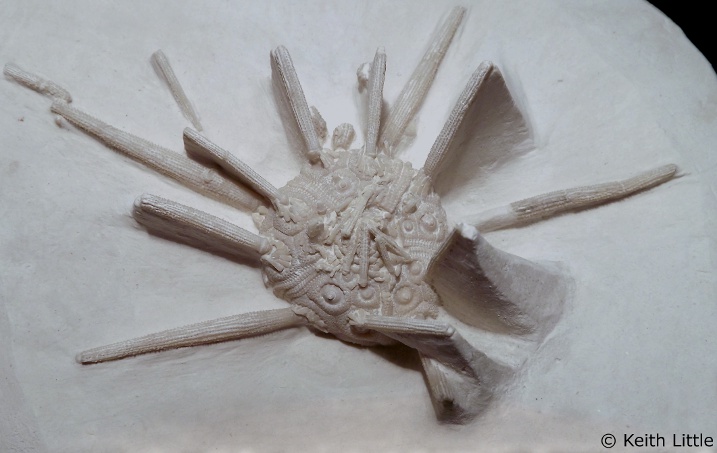
|
Temnocidaris (Stereocidaris) sceptrifera sceptrifera (Mantell, 1822) |
Temnocidaris sceptrifera sceptrifera possesses some of the largest and most spectacular primary spines of the chalk cidaroids. They are elongate, with coarse, well developed spiny ornament and a flared tip. Mostly they possess a swollen proximal portion, which distinguishes them from the superficially similar Temnocidaris intermedia whose primary spines are of a constant width along their length. However, the adoral primary spines of T. sceptrifera sceptrifera are not swollen and can be indistinguishable from those of T. intermedia. Ranges from the Coniacian to the Campanian.

1). Temnocidaris sceptrifera sceptrifera - Adoral view of a spectacular new specimen, retaining a largely articulated complement of primary spines and scrobicular spines and with the tip of the articulated lantern protruding through the peristomal plating and mesh of adoral-most spines which appear to have closed over the mouth opening (x2.0, Seaford Chalk, 0.3m above Rowe's Echinoid Band, Thanet, Kent, in the collection of Keith Little). Image © 2012 Keith Little, by kind permission.

2). Temnocidaris sceptrifera sceptrifera - Typical primary spine from the ambital region of the testl with a thick swollen proximal portion, and a long and tapering distal portion with a slightly flared tip. Dense ornament of small thorns curved slightly towards the distal end and arranged in closely spaced longitudinal rows (x3, Seven Sisters, Seaford Chalk Formation, Randell Collection, RR1185).
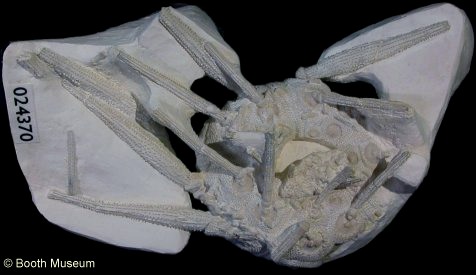 A A
|
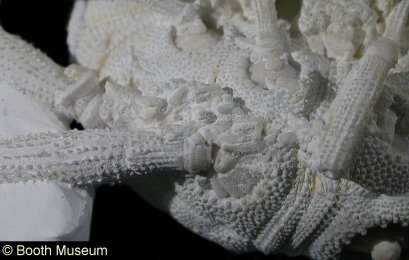 B B |
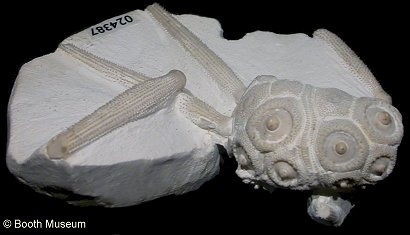 A A
|
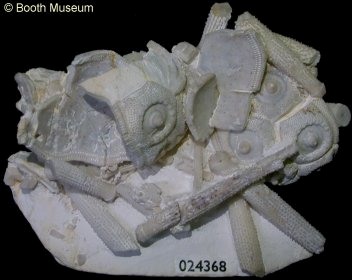 B B |
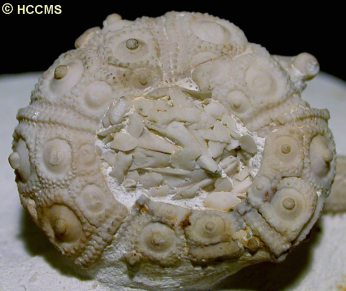 A A
|
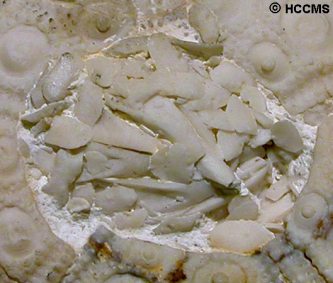 B B |
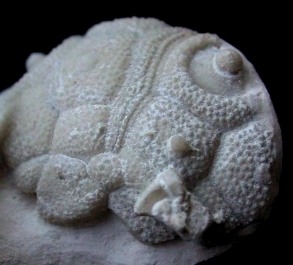 A A
|
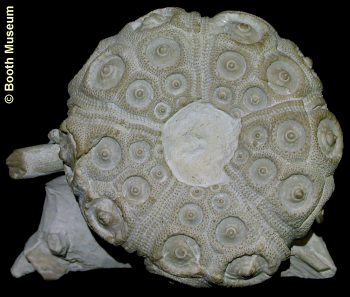 B B |
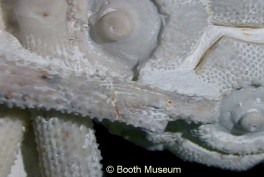 A A
|
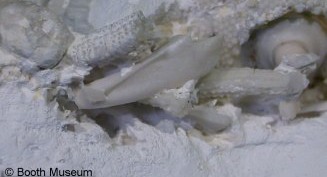 B B |
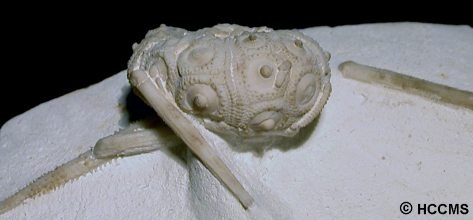
8). Temnocidaris sceptrifera sceptrifera - Lateral view (upside-down) of a small (juvenile?) individual with some spines (x2.6, White Chalk, HCCMS (Hampshire County Council Museum's Service) collection, stored at Gosport Museum, G.1983.393, by kind permission of Dave Kemp, HCCMS).